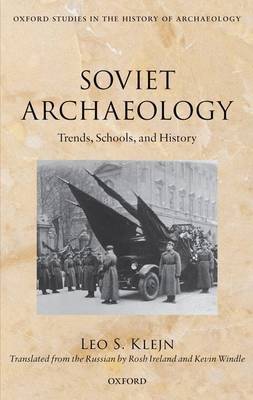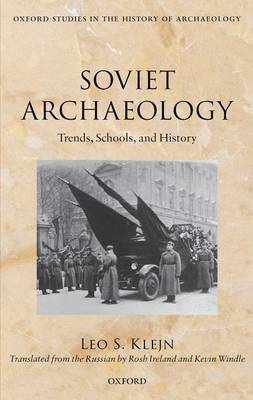
- Afhalen na 1 uur in een winkel met voorraad
- Gratis thuislevering in België vanaf € 30
- Ruim aanbod met 7 miljoen producten
- Afhalen na 1 uur in een winkel met voorraad
- Gratis thuislevering in België vanaf € 30
- Ruim aanbod met 7 miljoen producten
Zoeken
Omschrijving
In Soviet Archaeology: Trends, Schools, and History, Russian archaeologist Leo S. Klejn looks at the peculiar phenomenon that is Soviet archaeology and its differences and similarities to Western archaeology and the archaeology of pre-revolutionary Russia. In this updated and expanded volume, he considers whether Soviet archaeology can be considered as Marxist and, if so, was Marxism a help or hindrance to Russian archaeology at the time. Were the writings of Soviet archaeologists sheer propaganda with their own political agenda or can they be considered as objective sources about our past? Klejn shows that Soviet archaeology was not a monolithic block as Soviet ideologists attempted to represent it, but rather it was divided into competing schools and trends and, even under the veil of Marxist ideology, was often closely related to the movements occurring in western archaeology. However, inside the system, even the slightest deviance from the party line was considered hostile, and the guilty person was often discharged and punished with sentencing to a life in the Gulag prisons, or even death. As an archaeologist working during the turmoil of the Soviet government's rule over Russia, Klejn's scholarly account is laid out in a journalistic manner, tracing the history of archaeology in Russian from 1917 to beyond 1991, as well as recounting the lives and fates of leading Soviet archaeologists in vivid descriptions with accompanying photographs.
Specificaties
Betrokkenen
- Auteur(s):
- Uitgeverij:
Inhoud
- Aantal bladzijden:
- 430
- Taal:
- Engels
- Reeks:
Eigenschappen
- Productcode (EAN):
- 9780199601356
- Verschijningsdatum:
- 7/02/2013
- Uitvoering:
- Hardcover
- Formaat:
- Genaaid
- Afmetingen:
- 146 mm x 222 mm
- Gewicht:
- 739 g

Alleen bij Standaard Boekhandel
+ 382 punten op je klantenkaart van Standaard Boekhandel
Beoordelingen
We publiceren alleen reviews die voldoen aan de voorwaarden voor reviews. Bekijk onze voorwaarden voor reviews.











